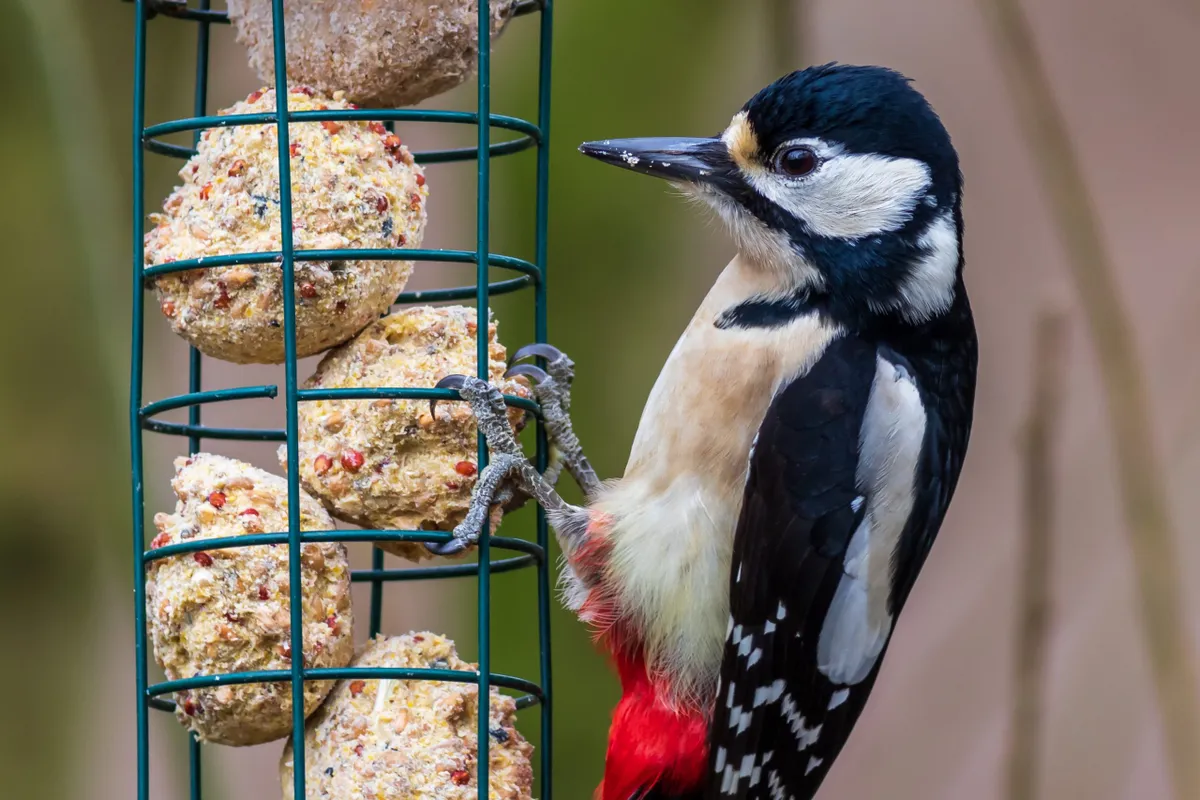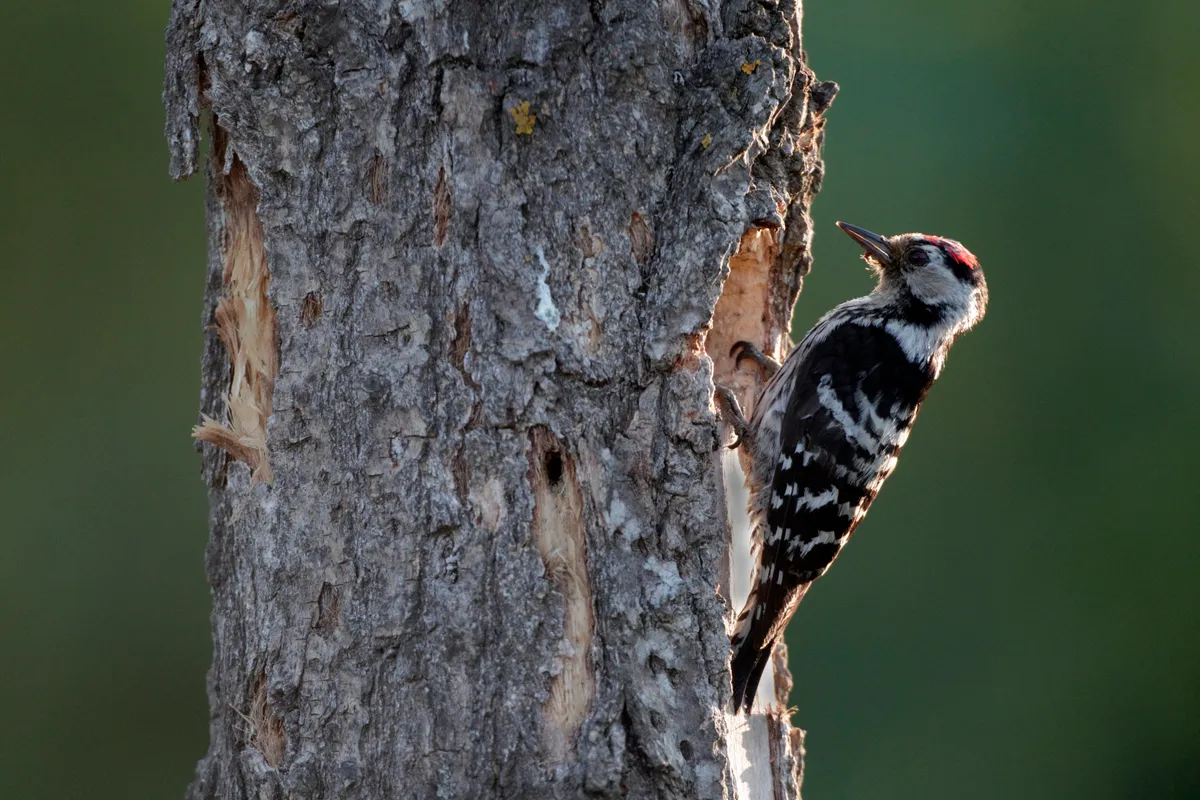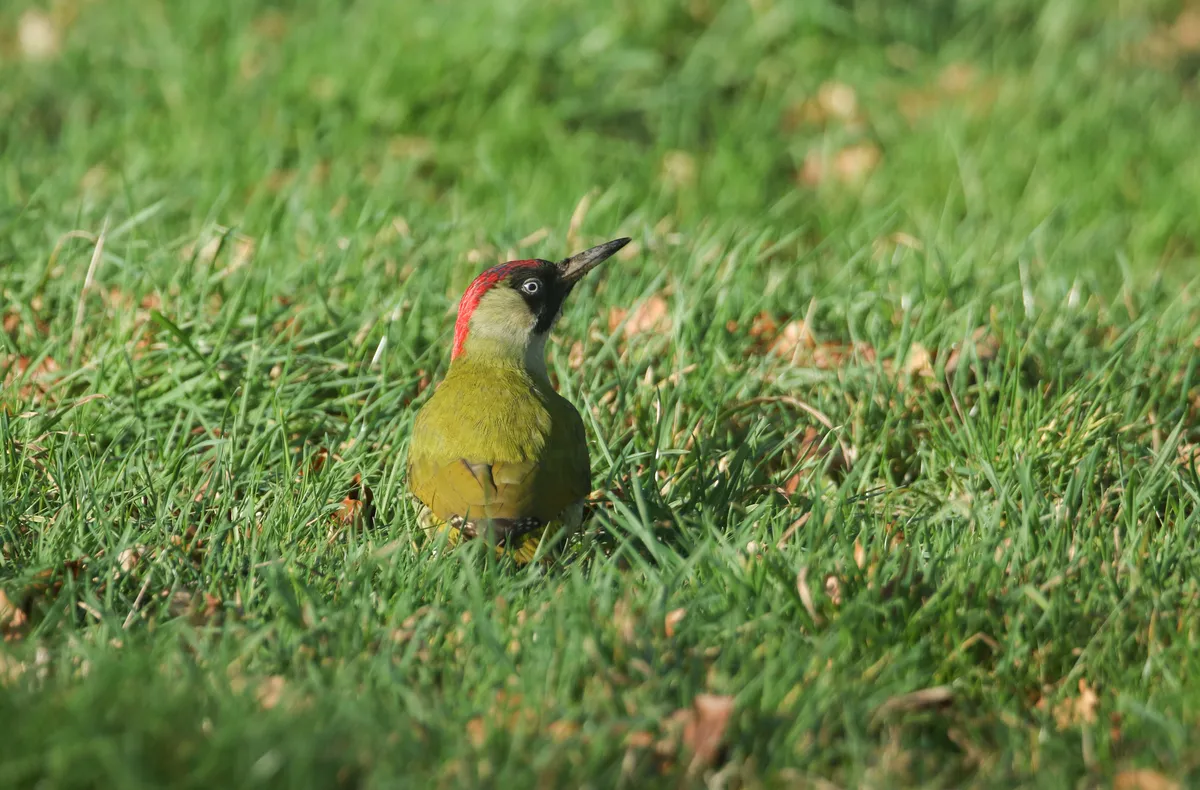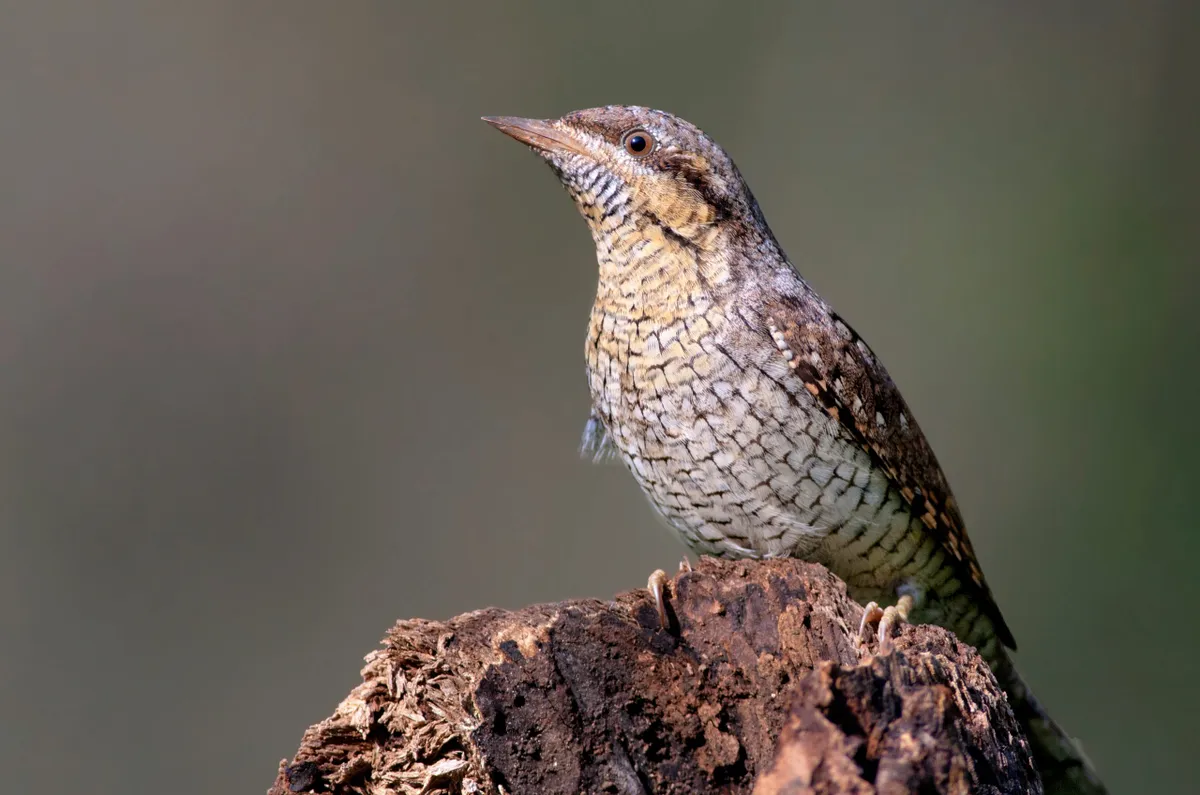Whether drumming away in woodlands, feeding on nuts from your bird feeder, or hunting for ants in your lawn, woodpeckers are a fascinating – and beautiful – group of birds.
How many woodpecker species are found in the UK?
There are three true woodpecker species (Picinae subfamily) found in the UK: the greater spotted woodpecker, the lesser spotted woodpecker and the green woodpecker. Plus, the Eurasian wryneck, a cousin of the true woodpeckers.
Woodpeckers of the UK
Great spotted woodpecker (Dendrocopos major)

The great spotted woodpecker is probably the most familiar woodpecker to the majority of people, as it can be tempted into gardens with bird feeders.
Males can be distinguished from females by the red patch on the back of their necks, whilst juveniles have red patches on top of their heads.
Great spotted woodpeckers feed on insects and invertebrates, hammering holes into tree barks and then using their long tongues to reach inside the hole and catch beetle larvae. Males will also hammer on trees to warn rivals away from their territories.
Lesser spotted woodpecker (Dryobates minor)

Similar in colouration to the great spotted woodpecker, the lesser spotted woodpecker in much smaller, and also much rarer. It is the smallest woodpecker found in the UK, and one of the country's fastest declining woodland bird species.
Lesser spotted woodpeckers feed on insects and invertebrates.
In an episode of The Plodcast, BBC Countryfile editor Fergus Collins went for a walk in a Celtic rainforest and encountered the lesser spotted woodpecker.
Green woodpecker (Picus viridis)

Unlike the greater or lesser spotted woodpeckers above, the green woodpecker is not black and white. Instead it is – as it names suggest – green. Both males and females have a red cap, but males also have a red streak below their cheeks.
Green woodpeckers feed mainly on ants, searching for them amongst the grass.
The distinctive laughing call of the green woodpecker is known as a “yaffle”.
Eurasian wryneck (Jynx torquilla)

Extinct as a breeding bird in the UK, the Eurasian wryneck does occasionally appear here during the spring and autumn migration seasons. Wrynecks are mottled brown and grey, and when threatened, will twist and turn their neck to mimic a snake.
Main image: Green woodpecker perched in grass and buttercups. © Mark J M Wilson/Getty

